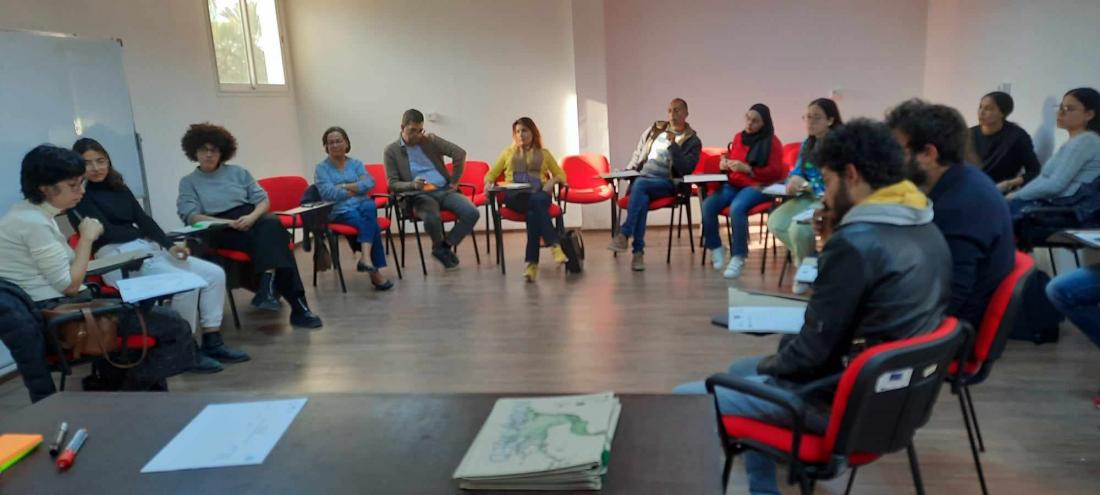NAWAMED: A successful participatory process in Tunisia to co-design the edible garden thanks to the valorisation of treated grey water

In Tunisia, student participation made a difference in the sustainable valorisation of treated greywater based on the concepts of beauty, sustainability and inclusiveness.
In Tunis, a living green wall (LGW) for greywater treatment and reuse was planned for the SWM House (Sustainable Water Management House). For this, even if it is an innovative technology, a design co-produced by the Tunisian Centre for Water Research and Technology - CERTE and IRIDRA, both partners of the NAWAMED project, could be enough. Nevertheless, CERTE decided to valorise this new process in order to develop an in-depth awareness campaign on the importance of greywater valorisation and the potential for its reuse after treatment.

In fact, CERTE launched and implemented during all the year a participatory process that started with a meeting at the SWM House, CERTE plant, organized in collaboration with students from the National Agronomic Institute of Tunisia (INAT), where SWM House is located. An open call was issued by the CERTE-NAWAMED team, including students from the "Jardins" university residence, whose showers produce grey water. More than 15 students responded to the CERTE invitation, as did experts contacted for a holistic perspective. The process was divided into three parts.
The first part involves a visit to the LGW construction site, denominated WALL2WATER, and an explanation of the concept, the greywater treatment process chain, and the valorization of water for flushing at SWM House. This was followed by a discussion on Tunisia's water deficit, the significance of non-conventional water (NCW) as a standalone resource, the role of nature-based (NbS) solutions, and benefits related to urban environments. The meeting was moderated by the CERTE team.
In the second phase, the CERTE team explained the idea of creating an edible garden next to the LGW for using any excess of treated greywater for irrigation, with participatory management by the students. The discussion shifted towards health risks, irrigation methods, plant types, attractiveness to effectively convey the message/concept, and how to amplify impacts. A presentation of Tunisian reuse standards and Tunisian legislation regarding the list of specific plants for irrigation using treated water helped address concerns, dispel misconceptions, and bring all participants to a common level of understanding of the overall framework.
The third part was moderated by landscape architect Ms Nawel from ALEA OLEA Architecture & Paysage, with the initial goal of co-designing the nourishing garden with the participants. A list of criteria was developed, and suitable solutions to implement were proposed and discussed (see figure) by students.

The locations of the various solutions were identified, and an initial design was created . The work was divided among the participants to propose a list of fruit trees and aromatic plants, considering their water needs and diverse year-round production, except during summer, as a priority.

Two further online meetings allowed for a presentation, and from the landscape architect, a more refined final design. All participants agree that without treated greywater from the vegetated wall and harvested rainwater, it would not be possible to create this garden. The participatory approach undertaken with different experts has facilitated a holistic approach with sustainable components tailored to needs and context.
The process and the final design are in line with the New European Bauhaus as an interdisciplinary, participatory initiative leading to beautiful and sustainable solutions inspired by the context, responding to real needs and encouraging community engagement and ongoing exchange.
The participatory thinking process undertaken is in itself an awareness initiative for agronomy students and future engineers about the significance of valorizing NCW within a decentralized water management framework and adapting its quality for specific uses while mastering health risks.
The whole process is interspersed with exam periods and holidays, but It's well worth the effort, and CERTE wishes everyone involved every success. Now that the LGW is operational, the process of implementing it is underway.









